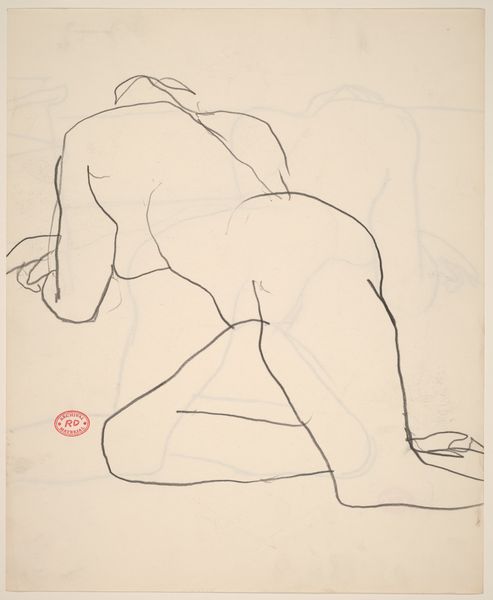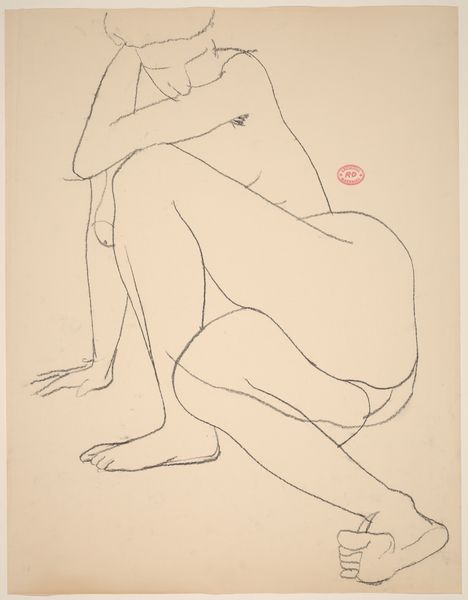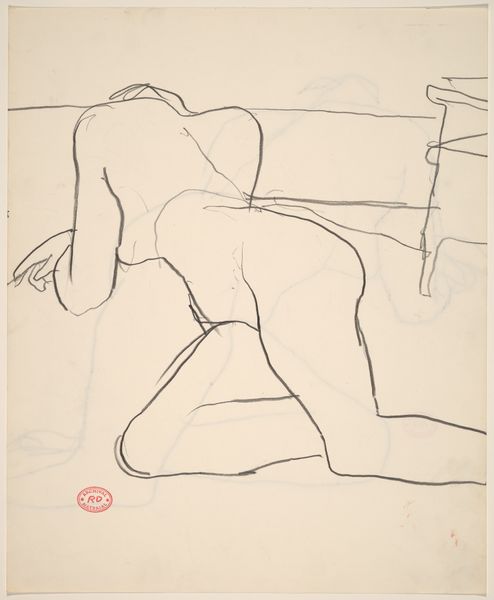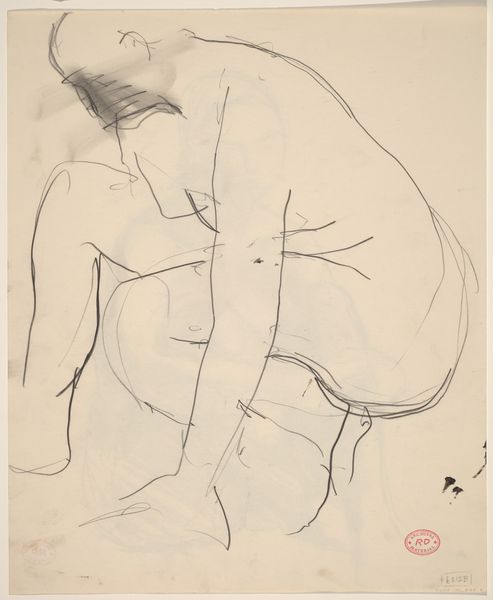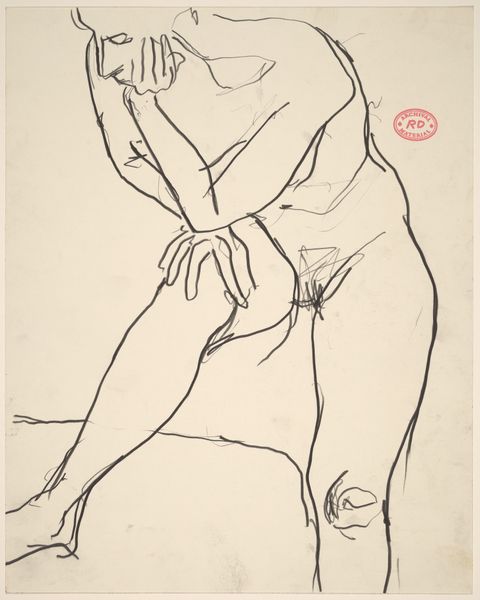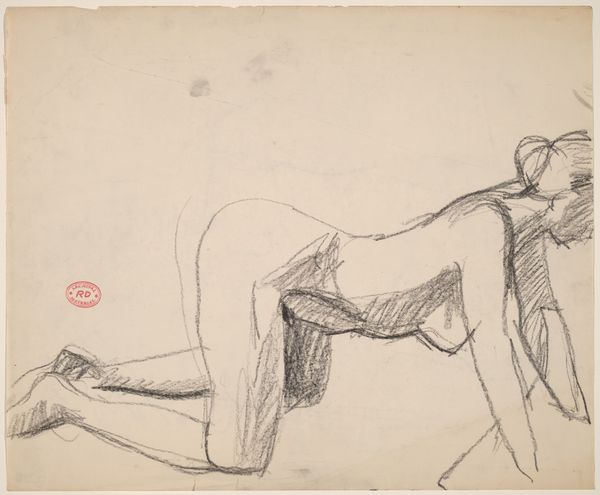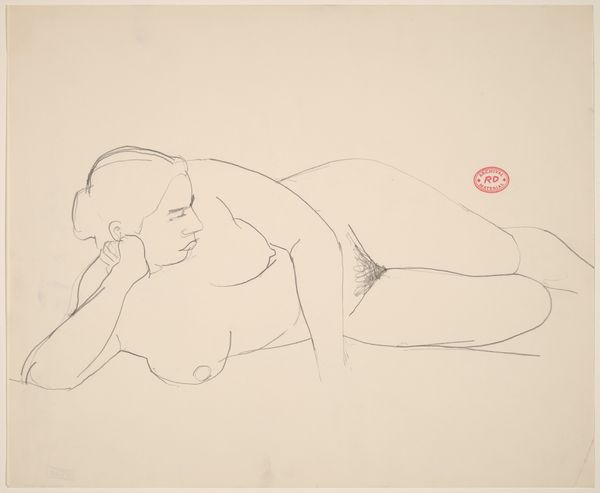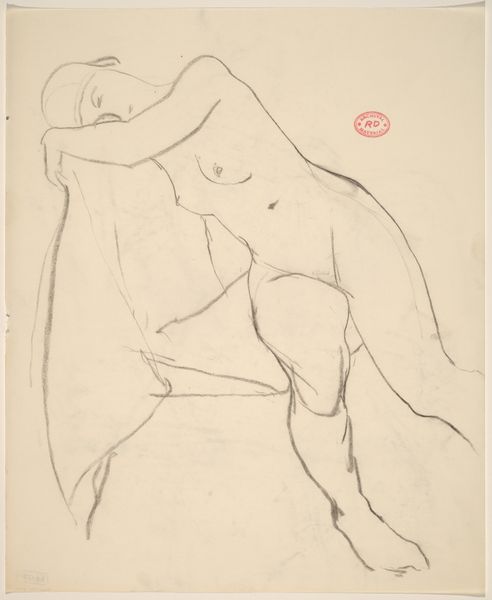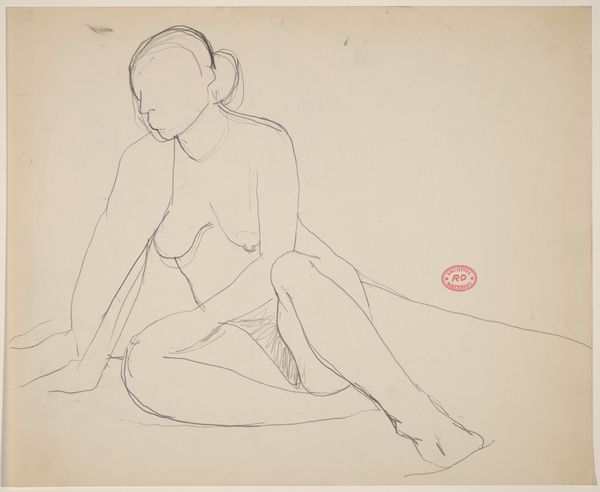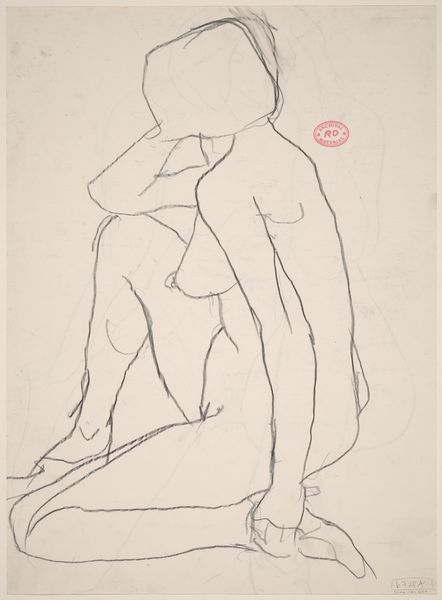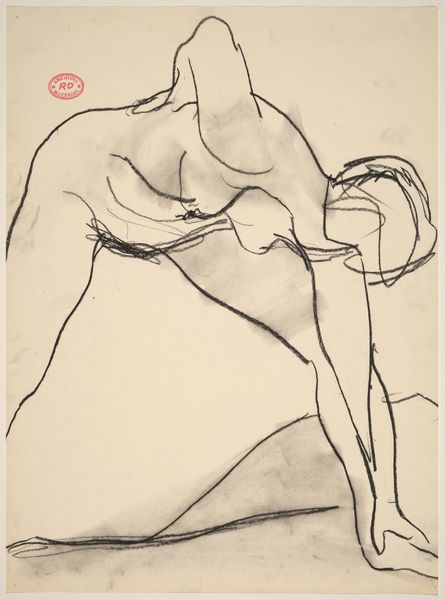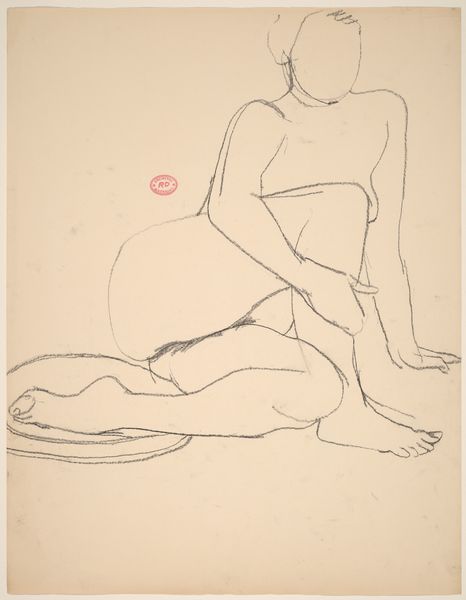![Untitled [female nude leaning over a draped stool] by Richard Diebenkorn](/_next/image?url=https%3A%2F%2Fd2w8kbdekdi1gv.cloudfront.net%2FeyJidWNrZXQiOiAiYXJ0ZXJhLWltYWdlcy1idWNrZXQiLCAia2V5IjogImFydHdvcmtzL2ViMzZiMjI0LTQyMmYtNGE0NS04ODczLTRjMzg4M2I5OGVlNS9lYjM2YjIyNC00MjJmLTRhNDUtODg3My00YzM4ODNiOThlZTVfZnVsbC5qcGciLCAiZWRpdHMiOiB7InJlc2l6ZSI6IHsid2lkdGgiOiAxOTIwLCAiaGVpZ2h0IjogMTkyMCwgImZpdCI6ICJpbnNpZGUifX19&w=3840&q=75)
Untitled [female nude leaning over a draped stool] 1955 - 1967
0:00
0:00
drawing, pencil
#
drawing
#
figuration
#
bay-area-figurative-movement
#
pencil
#
arch
#
nude
Dimensions: overall: 43 x 35.2 cm (16 15/16 x 13 7/8 in.)
Copyright: National Gallery of Art: CC0 1.0
Editor: Here we have Richard Diebenkorn's "Untitled [female nude leaning over a draped stool]", made sometime between 1955 and 1967 using pencil on paper. The lines are so delicate; the pose almost feels like a moment caught in private. How do you read this work? Curator: What strikes me is the gaze—or lack thereof. The figure is turned away, obscured. Given the historical context of the nude as a traditionally male-gazied subject, what does it mean for Diebenkorn to deny us that direct visual access? What are we invited to consider instead? Editor: Maybe it’s about vulnerability, exposing without performing? Curator: Exactly. It challenges the traditional power dynamic. Consider also the post-war period in which this was created. There was an ongoing renegotiation of gender roles, a grappling with female subjectivity. Is this an attempt to represent a woman's experience, her internal world, rather than simply her objectified form? Editor: It’s interesting you mention the internal world. There's a sort of melancholy to her pose; almost introspection, maybe? Curator: Yes, that sense of interiority, it connects, for me, to feminist critiques of representation and attempts to center female agency. What do you make of the draped stool? Is it a prop or something more? Editor: Maybe it symbolizes support, or even confinement? There's a sense of reliance, perhaps? Curator: Precisely! It’s these nuances that really open up the work, shifting our perspective from passive observation to active engagement with questions of identity and power. Editor: I didn't see those layers initially, but considering the cultural context really illuminates the artwork. Curator: Indeed. Art is never created in a vacuum, and understanding those connections unlocks a richer, more meaningful understanding of the work itself.
Comments
No comments
Be the first to comment and join the conversation on the ultimate creative platform.

